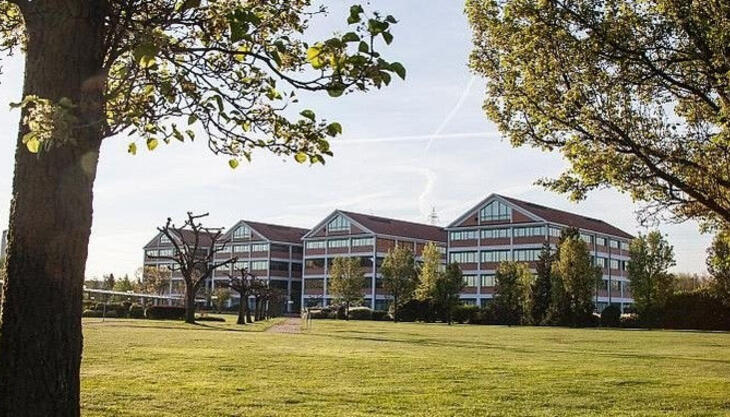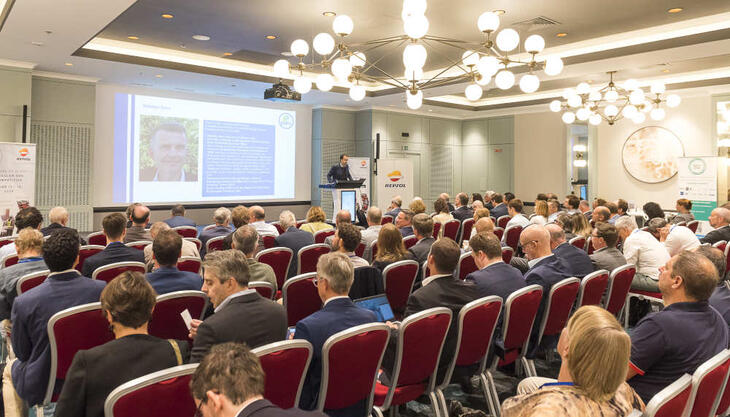Gefran focuses onits core business

Maria Chiara Franceschetti took over as Gefran's new CEO on April 29, 2014. MacPlas asked her a few questions about the new direction the Brescia-based business is taking in the wake of the recent edition of the SPS Italia Show (held in Parma from 20 to 22 May this year), where the company showcased its latest products in the sensor, automation and motion control Sector.
You were appointed CEO on April 29 this year at the shareholders' meeting. What has changed since then?
Obviously the board of directors has changed. And since former CEO Alfredo Sala left the company – after about 10 years – Gefran has opted to get back to the values instilled by the family that founded it. Although Gefran has been quoted on the stockmarket since 1998 and is run by a board of directors, at the same time we remain a company that believes strongly in the entrepreneurial values of its founders: my father Ennio - who is still working in the company - and his brother Giacomo (the name Gefran is taken from the initials of the two Franceschetti brothers).
The decision that I would take over was one I made together with my sister Giovanna and my brother Andrea, who both work for the company, because I have been with Gefran for fifteen years. I started my career in management control and spent a long time working with IT systems and helping to set up the SAP system (Systems, Applications and Products in data processing). From there I moved onto to human resources so I am familiar with everyone that Gefran has taken on in the past 10 years.
Once I had learned everything there was to know about data processing and how the business operates, there was a progression towards the idea of taking over the reins of the company so that the all important decision making processes could be streamlined at a moment in Gefran's history when important, strategic choices needed to be made.
So acting quickly is key then?
We are counting on our ability to reach decisions rapidly. For the next three years we intend to concentrate on what we do best: the products that have brought Gefran this far – sensors, components and industrial control units. We will be "freezing" the photovoltaic arm of the business which weighed so heavily on the group's performance (in 2013 profits fell from Eur 131.5 to Eur 128.3 million, the EBITDA (earnings before interest, taxes, depreciation and amortization) went from Eur 7.7 to Eur 1.6 million (and the net result was that we went from making profits of Eur 586,000 to a loss of Eur 8.4 million). We are now considering some joint ventures with partners from outside Italy for the photovoltaic end of the business. Operators in India and Turkey have expressed interest and our objective is to reach an agreement before the end of the year.
Taking the decision to abandon the alternative energy market and return to our core business was a difficult one; for the last five years we worked extremely hard to develop our photovoltaic operations. However half of our turnover comes from drive and control mechanisms and we have chosen to concentrate our efforts, first and foremost, on motion control devices and on applications that are more representative of the company's business strategy - lifting mechanisms - via our division in Gerenzano (near Varese) which has been an important part of the Gefran group for more than ten years. Naturally we also decided to focus more on the plastics sector which is a transversal application for all Gefran products, then finally there are our products for the metalworking industry.
For each application we selected a single product range to invest in – the ones we felt confident would give us a return on our investment. As regards component parts for automated systems, for example, the choice fell on a range of temperature controllers, which have already been completely updated. After this we plan to undertaken a sweeping restyling project, that will include technology, for displays that can be used for ovens, or similar items for the "power world".
This is the beginning of a new era at Gefran, with a strategy that aims to increase orders and production and therefore market share. The aim is to achieve a turnover of Eur 180 million by 2016 as compared to an industrial plan of Eur 25 million.
Contrary to what has happened in the past, we are expecting a significant push towards distribution and customer service thanks to products that have been designed and manufactured because they are something the customer likes and wants. These are articles that are sold in their thousands, which are installed in control units, ovens and chillers, etc. So the fact that they are aesthetically pleasing with colourful LCD perhaps, is important to those who will be using them.
For example we have been looking into an instrument - called Zapper - which was not showcased at SPS Italia to avoid the risk of the idea being copied. This will configure an object at a distance after the formula has been loaded or the PC customised. All of which can be done using a device that is very similar to a remote control.
Which foreign markets in particular will you focus on?
For the moment we are concentrating on European markets mainly, because we believe that they represent an important opportunity for Gefran. Europe (including Italy) currently accounts for about 60% of our turnover. More specifically we are expecting good results from outside the EU area in countries like Turkey and Russia, where we recently opened an office that is delivering very satisfactory results.
Production however will remain in Italy… What are your impressions of the market in our country?
We are determined to keep our main production facilities in Italy, at our plants in Provaglio d'Iseo and Gerenzano, although drive mechanisms for lifting applications are produced mainly in China: about 50,000 pieces a year leave the plant we opened in Shanghai several years ago to make position sensors and melt sensors for exclusive use in the local market. However these sensors are also produced in Boston for the North American market and, of course, in Italy.
As regards sales, the Italian market has been lagging back in recent years since Gefran decided to enter the photovoltaic business. Results have gone down since we left this sector, but in the wider industrial context we are selling more. Growing our market in Italy is more complicated because we already have a significant market share, so it is easier to improve sales figures in those areas where we have not, until now, been active.
Your core business has not experienced a drop in business then?
No. We haven't experience any drop in sales in the industrial sector. We are well aware that our country is going through a difficult period, one in which companies are struggling to keep up with their turnover and financial commitments. The difference between us and our competitors, however, is not about making our payments on time, but how to find valid commercial partners – customers that really do want to make full use of their production capacity.
I should also point out that Gefran often sells to Italian manufacturers who, in their turn, export their products. This is why we were not effected by the 2009 recession. Actually, since then we have found ways of increasing growth – slowly but steadily.
Let's concentrate on the technical side. What are your most innovative and successful products?
In the temperature control sector we are currently concentrating our efforts on a "control system that talks" - the PID 650 / 1250. Thanks to a new alphanumerical display the operator can set which variables have to be controlled depending on the function of the application using terminology that is familiar to him.
It has large, coloured LCD characters on the upper part of the device with smaller letters and numbers below as well as configurable graphics. Furthermore this solution offers small "prompts' – update messages linked to a screen that can be used easily by anyone. Effectively this shows the operator which buttons to push and which operations are currently being performed. We also like to point out another function called energy counting. In today's world there is greater awareness of energy consumption on the part automated systems operators. For example thanks to this feature, temperature controllers flag up how much energy is being absorbed in the area they are working on.
Touching on sensors: we always refer back to hydraulic motion applications, an area where we intend to develop a specific range of products. In this sector we are focusing on the RK5: a positioning sensor mounted inside cylinders using our patented magnetostrictive wave technology, for contactless measurements. Furthermore the technical staff at Gefran have perfected a wide range of products for application in a variety of, shall we say "less visible" areas of hydraulic motion control: this would include items such as pumps, controllers and electronic devices mounted on machinery used in the construction industry, the agricultural sector and in general in any machine destined for material handling operations.
Another field that is certainly on our radar is the plastics sector where we are offering an new series of inverters: the water cooled ADV 200 WH. The first models were presented at Parma and others will be launched at the SPS IPC Drives Show in Nuremberg (from 25 to 27 November 2014) and then throughout 2015. The water/oil coolers fitted on these inverters are much more compact than air cooled devices. This smaller size makes them much easier to install on electronic control panels than more conventional components. These new inverters offer impressive performance as they are hardwearing, reliable over time and easy to fit and also require less power.
For this reason special contact systems on the cooling fluid tubes have been designed using a device that is easy for trained operators to access and run. Furthermore we developed the ADV 200 WH in partnership with one of our German customers and when a manufacturers requests a specific product we can be safe in the knowledge that initiating the necessary complex engineering and industrialisation processes is fully justified.


















